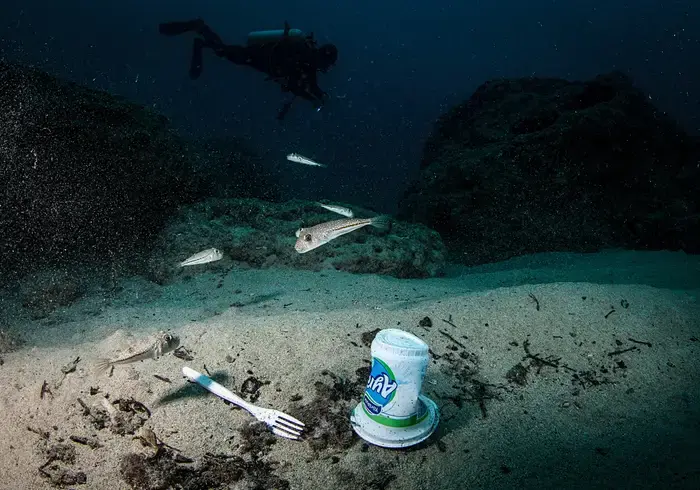Bioplastics: Let’s Shift from Linear to Circular Systems
- Kara Guloien
- Jun 3
- 3 min read
The False Solution Presented by Bioplastics
In the form of single-use packaging, construction materials, electronics, microfibers, and oh so much more, petroleum-derived plastics can be found accumulating in nearly every crevice on this planet - from the human circulatory system to deep sea thermal vents.
What’s worse, is only 9% of this material is recycled, despite its persistence and long-term durability. Furthermore, the degradation of these materials feeds greenhouse gas emissions and inevitably leads to the build up of microplastics and nanoplastics - posing dire and complex implications for human and environmental health.
In response to the “false-solution” we call recycling, many corporations have introduced products marketed as an alternative to traditional plastics - biodegradable plastics, plant-based plastics, bioplastics. At first glance, this may sound like progress - and in a sense, it is -, but digging deeper, some are not the good that is being portrayed
For instance, take Coca-Cola’s PlantBottle. Despite its name, the PlantBottle is still 70% oil-derived plastic. The remainder comes from plants like sugarcane - far short from innovative and hardly anything close to biodegradable. These types of bioplastics are everywhere and highlight the deceptive intentions of the oil and gas industry.
The Problem with Bioplastics
To this day, there is no magic material on the market that can be tossed into a forest to disappear safely. Under certain conditions, some plant-based plastics can compost - however- most require specific conditions to decompose - like high temperatures.
These types of facilities are rare in the wealthiest countries, so most still end up being shipped overseas and left indiscriminately with regularly oil-based plastics.
They are left to the same fate: Incinerated or tossed into a landfill to emit greenhouse gases for centuries.
But wait, there’s more.
Bioplastics come from crops using pesticides and herbicides, which contribute to environmental off-run and compete for limited agricultural spaces. In many ways, these present similar environmental consequences that plagued the biofuel industry.
In time, bioplastics will become more innovative - and there are some that are already proving to be worth their salt (like this seaweed-based alternative, no pun intended). That being said, there remains a moral dilemma requiring systemic change. Top to bottom, bottom to top.
Bioplastics are still Single Use Items
We need a “circular economy” — one that prioritizes reuse and recycling, designs products for longevity, and eliminates unnecessary plastic altogether.
A few key steps include:
Eliminating packaging where possible
Replacing plastic with actually compostable materials
Prioritizing repairs over replacement
Scaling up recycling efforts, especially in developing countries
Forcing corporations to take responsibility for the waste they create
This last point is crucial. Right now, governments and taxpayers bear the cost of managing plastic pollution. But under a model called extended producer responsibility, companies would be required to collect and recycle the packaging they produce.
Some businesses are starting to take this seriously, but many of these efforts are still small-scale, while global plastic consumption continues to skyrocket — especially in regions with little or no recycling infrastructure.
What Needs to Change
As individuals, we drive market change. Right now, it’s cheaper and easier to produce new plastic from oil than to recycle and reuse existing materials. Further, governments and taxpayers bear the cost of plastic pollution, rather than having producers take responsibility.
We need a shift in how we produce, use and manage materials. As consumers, as advocates, and as a community, we must push for policies and practices that hold polluters accountable to build a cleaner and more circular economy.











Comments